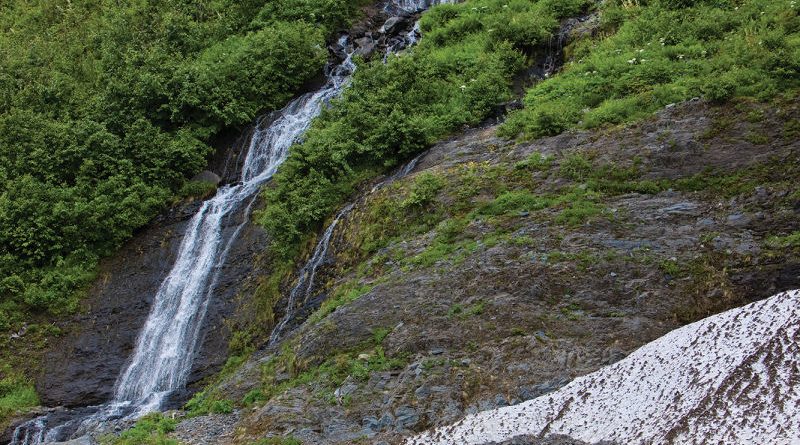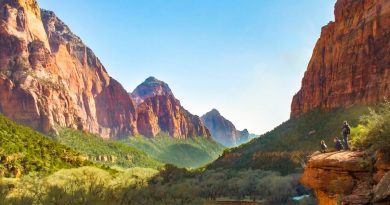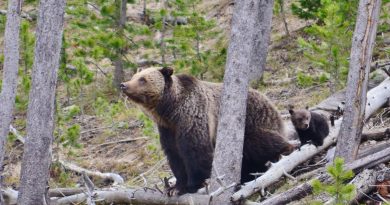The Alaskan Non-Profit Saving State Parks
When three parks in Alaska had been on the level of closure, Valdez Stir Alliance stepped in to help.

At its handiest, the Shoup Bay Path is a sampler of what makes Alaska immense. For 10 miles, the route traces the shoreline of Valdez and Shoup Bays, passing through alder wooded discipline and flower-stuffed meadows on its manner to views of Shoup Glacier. However final summer season one thing became lacking: the path.
The direction, overgrown with spiky devil’s club and cat’s claw, represented one shrimp share of Alaska affirm parks’ $Sixty 5.1 million in deferred maintenance, but the four-individual crew that showed as a lot as kind out it in the summertime of 2017 hadn’t been sent by the affirm. Instead, they had been working for Valdez Stir Alliance, a neighborhood nonprofit experimenting with a current manner of preserving Alaska’s public lands originate.
Alaska’s affirm park machine is the supreme in the country, managing some 3.6 million acres. Sadly, its budget—$14 million in 2017—is minuscule by comparability, a section of the $522 million that California will exhaust on its parks this season.
“All people’s been working to tighten their belts and obtain what they’ll to gash charges,” says Ethan Tyler, director of Alaska’s Division of Parks and Outside Game. The division has turned to non-public operators, in total locals, to speed 26 of its parks. Those that don’t obtain takers chance slipping into “passive administration,” which is as execrable as it sounds.
Inner most endeavor has been share of The United States’s public lands since 1916, when Stephen Mather, the first director of the National Park Carrier, launched concessions to the nationwide parks. They’re now identical outdated, from resorts and restaurants to buses and backcountry guides. However in the previous decade, a number of politicians possess gone further and proposed privatizing the operation of entire park items. Advocates argue that privately speed parks delight in Alaska’s gash overhead and gash the burden on taxpayers.
Some contend that the income motive in total is a drive for suited. Warren Meyer, president of concessionaire Game Helpful resource Administration, says that dependence on expenses creates an incentive for industrial operators to position customers first. “In our firm, a hundred percent of the revenues we receive is from company, that manner that if we don’t speed an true operation that is graceful to company, we don’t obtain any money,” writes Meyer on his blog, parkprivatization.com. Inner most operators don’t bear the parks they speed, and individual expenses are set by the authorities.
Opponents counter that private operators don’t pay their graceful portion of maintenance, allowing them to reap profits while leaving taxpayers to foot the invoice. A review by the Heart for American Growth realized $389 million in deferred maintenance at concessionaire-operated companies and products for the length of the nationwide parks. Others effort that privatization is the first step towards a stealth takeover of The United States’s heritage, corresponding to in 2016, when Yosemite spent $1.7 million on current signs after the outgoing concessionaire, Delaware North, claimed logos on the names of several of the park’s iconic sites.

However there’s a 0.33 manner. When Alaska affirm parks launched in 2015 that it became shopping for permitees to sustain an eye on three Valdez-space parks, including Shoup Bay Teach Marine Park, it became a neighborhood nonprofit, not an organization, that answered the call. Based correct months earlier, Valdez Stir Alliance’s mission is to promote outdoor sports as an economic replacement to extractive industries.
For Valdez, the parks signify income: Roughly a hundred,000 folks talk over with them yearly, contributing an estimated $5 million to the local economy. “We felt it can well be devastating to possess these park items shut,” says Lee Hart, VAA’s govt director. In decision to allowing a industrial operation to cherry-decide perchance the most loyal sites, VAA argued that the affirm can possess to give precedence to groups willing to sustain an eye on the total bundle. After some dialogue, the parties inked a two-yr contract.
Nonprofits possess long lent money-strapped states a hand in asserting parks. However with this settlement, Valdez Stir Alliance grew to grow to be the handiest one in Alaska to speed all aspects of a park, from carting away trash and stocking bathrooms to gathering campground expenses.
One of the crucial extreme topic, then all over again, became merely preserving the trails originate. “Valdez is a subarctic rainforest, and in the summertime, vegetation grows incredibly snappy,” Hart says. In Shoup Bay, it took a crew of contractors three weeks of “intrepid brush-slicing” to definite a 7-mile share.
Quickly, VAA faced one other crux: funding. It grew to grow to be definite to Hart that, without affirm money, individual expenses from campsite and cabin reservations wouldn’t be enough to cloak their operations. Locals chipped in, with a number of restaurants pledging to donate 1 percent of their profits. VAA also secured a $forty,000 grant from the U.S. Department of Transportation—money unavailable to for-income operations.
Lately, Shoup Bay Teach Marine Park is in better form than when VAA took it over; the path reopened final summer season, and the group is in talks with the affirm to resume its contract for one other 5 years.
Every groups agree that they don’t desire the nonprofit to speed the parks forever. However with Alaska’s financial future accrued hazardous, will the affirm be ready to need them help anytime rapidly?
“That’s the million-dollar query,” Tyler says
Originally posted 2018-02-11 23:48:27.




